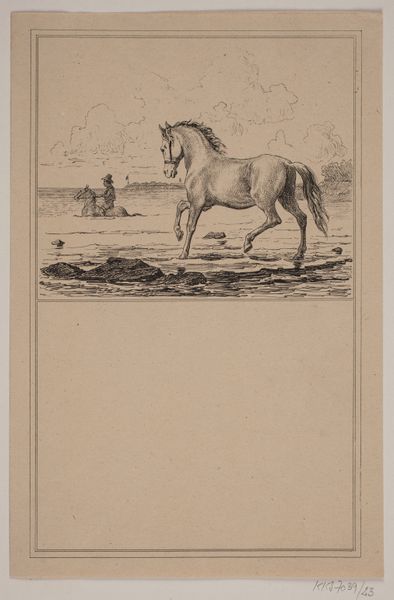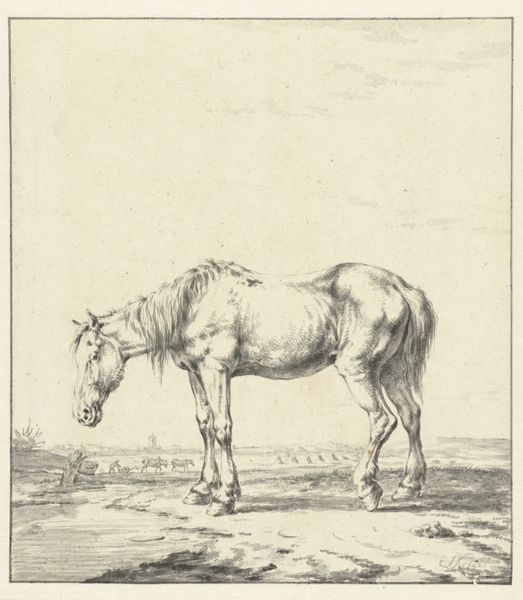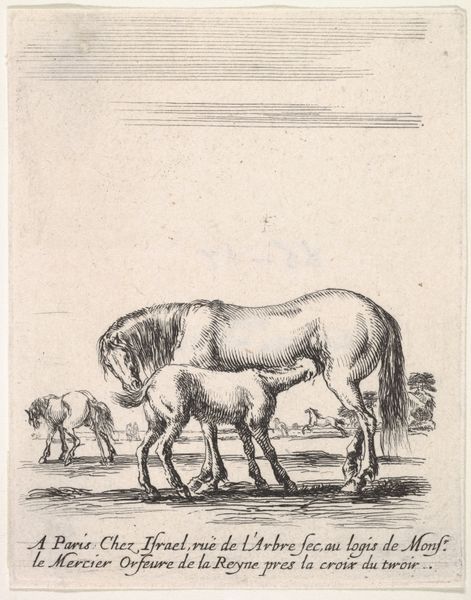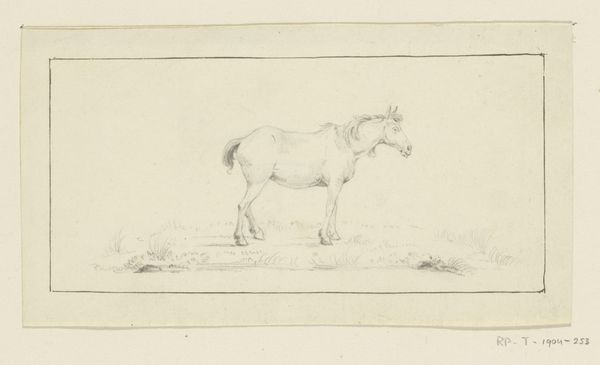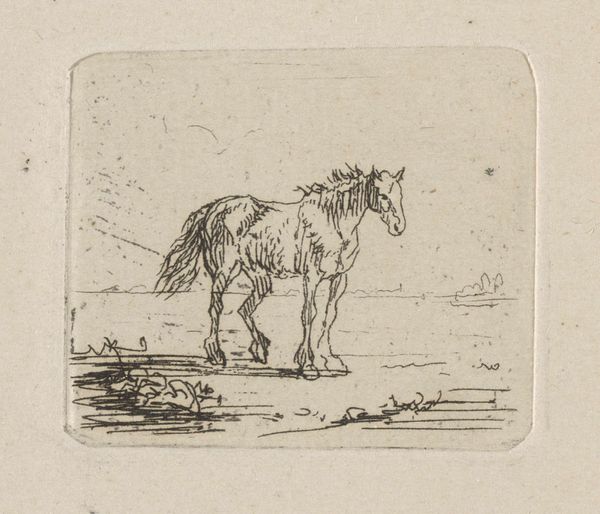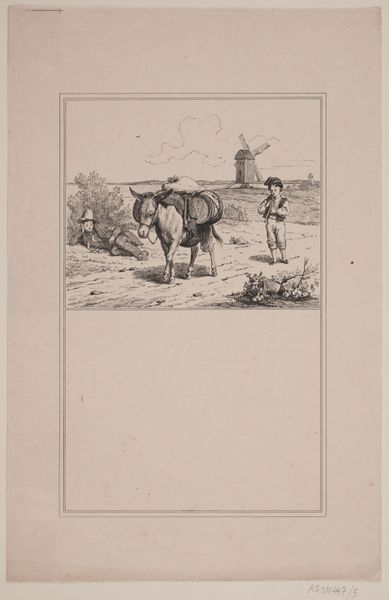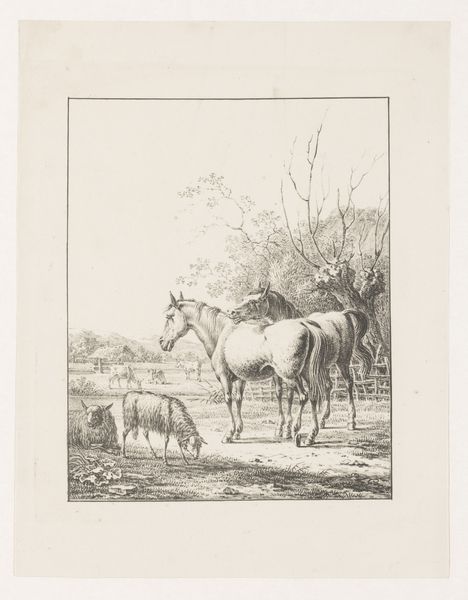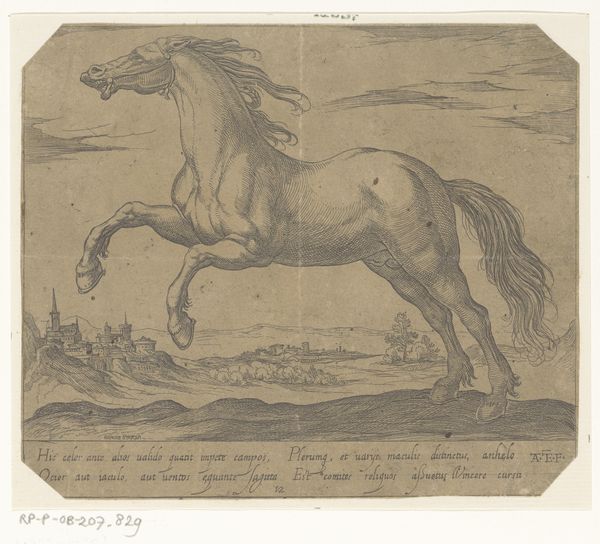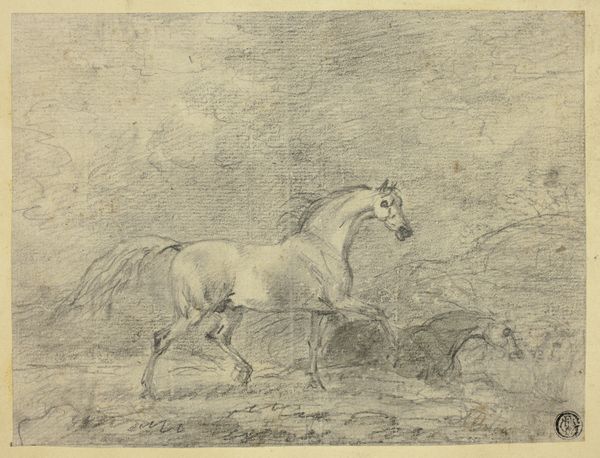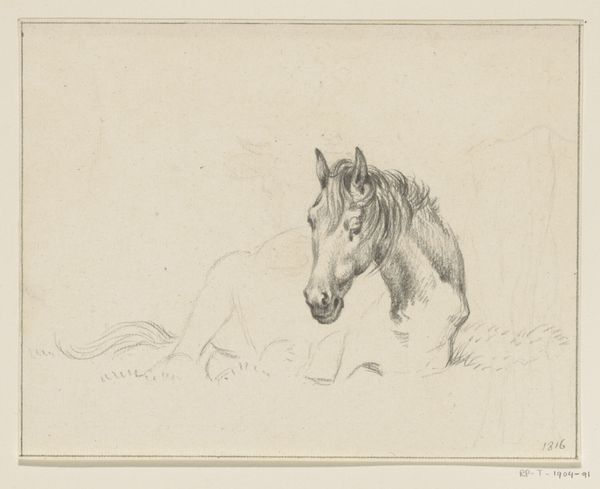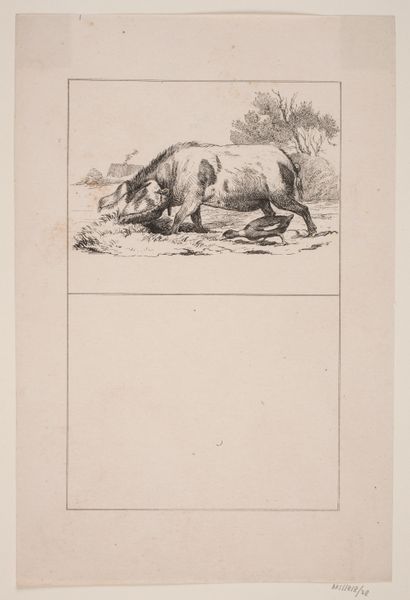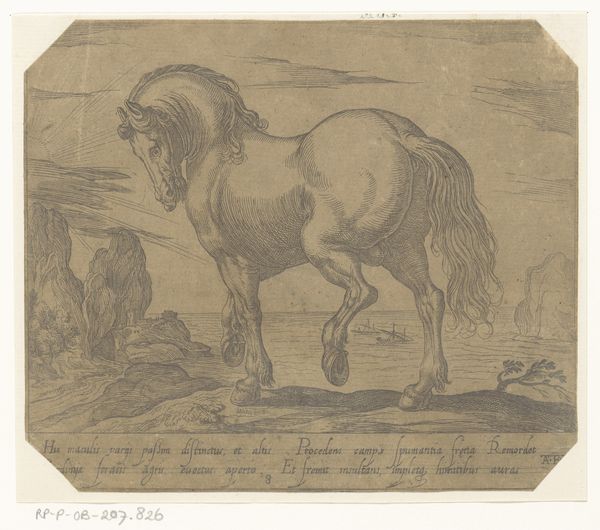
Hesten i vandet. Prøvetryk til Chr. Winther og M. Rørbye, "25 Billeder for små børn" 1846
0:00
0:00
drawing, lithograph, print, paper
#
drawing
#
lithograph
# print
#
landscape
#
figuration
#
paper
#
romanticism
Dimensions: 270 mm (height) x 175 mm (width) (brutto)
Curator: This lithograph, "Hesten i vandet," or "The Horse in the Water," dates back to 1846 and is attributed to Adolph Kittendorff. It's a test print intended for a children's book collaboration. Editor: It’s surprisingly delicate, even fragile-looking. The line work is so fine; the horse seems almost spectral as it moves through the shallows. Curator: Yes, Kittendorff’s draftsmanship is remarkable, especially considering its intended audience. It speaks volumes about 19th-century expectations for children's visual literacy. Note the romantic sensibility, harking back to idealized pastoral scenes and a longing for simpler times. Editor: And that lithographic stone! The process requires such meticulous labor, multiple stages of drawing, etching, and printing…each impression would be a unique trace of that process, that physical work. Were children then more attuned to the labor behind these images, the cost of their making? Curator: It’s a question worth pondering. The production context is significant. Picture this work as a commodity, not just a quaint image. Consider the emerging print culture in 19th century Denmark, catering to a growing middle class eager for education and entertainment for their children. Editor: That slightly awkward, unfinished lower section—that expanse of empty paper, that reminds us of the economics inherent to test printing: paper, ink, and the artist's time were precious commodities. Curator: Precisely! These images helped to cultivate values of nationalism and moral uprightness. Notice the way nature is portrayed -- harmonious, beautiful and orderly! A space where a child can imagine safely finding himself. Editor: Safe but also disciplined. Even a ‘simple’ landscape becomes a site of cultural instruction when translated via materials like the lithographic stone and the printmaking press, reaching across social strata in a specific form. Curator: Viewing Kittendorff’s print, we gain insight into the layered history of Danish art, children's literature, and the burgeoning print industry. Editor: Indeed. The horse is not merely a figure on paper. It's a complex reflection of labor, social aspiration, and Romantic ideals—embedded within the very fabric of its production.
Comments
No comments
Be the first to comment and join the conversation on the ultimate creative platform.
